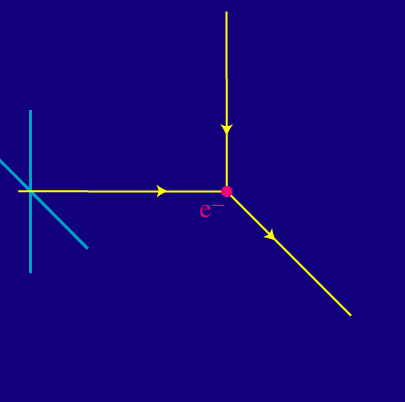Polarization by Scattering
Key Concepts:
-
Thomson scattering polarizes
light much as reflection
of f of a surface
-
A quadrupole
temperature anisotropy generates linear polarization
To understand why the CMB is partially polarized first recall the similar
process of polarization by reflection off
of a surface:

Polarization by Reflection
Heuristically, the incident unpolarized light "shakes"
the electrons. This shaking re-radiates the outgoing reflected light.
Since the electrons shake most easily in the plane of the surface, the
outgoing light is mainly polarized perpendicular
to the plane of the scattering.
This is why polarized sunglasses reduce the glare from reflection.
Thomson scattering provides
a similar means of polarizing CMB light. Consider incoming radiation
from the left being scattered by 90 degrees out of the screen:

Polarization by Thomson Scattering
Since light cannot be polarized along its direction
of motion, only one linear polarization
state gets scattered.
Of course there is nothing particularly special about
light coming in from the left. Consider instead light coming in from the
top:

Now the outgoing radiation possesses both
polarization states. If the incoming
radiation from the left and top are of equal intensity, the result is no
polarization in the outgoing direction.
Only if the intensity of the radiation varies at
90 degrees, i.e. the distribution has a quadrupole
pattern, does a net linear polarization result:

In particular there is a net linear polarization that is aligned
with the cold (red) axis of the quadrupole anisotropy.




